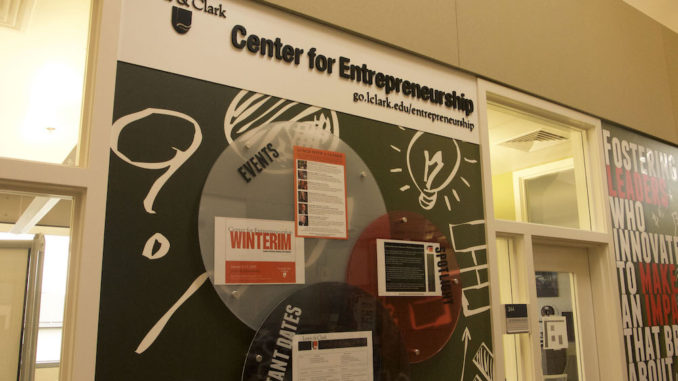
By Bradley Davis
I do not care for computer programming, accounting or business more broadly. As a political science major, I seek classes that read Plato or study Middle East relations. I have written in this paper about the need to encourage a Great Books curriculum. Nonetheless, I believe Lewis & Clark College’s most undervalued and underappreciated program is Entrepreneurial Innovation. In fact, I have seldom learned more than in Technologies of the Future — and certainly never had as much fun in class.
Courses in Entrepreneurial Innovation (EINV) have been a source of confusion for students and frustration for faculty. Students are generally unaware of what the program is or what it offers; students walking past classes in session often wonder how they can play with robots for credit. Many professors have not hidden their distaste for the program: some are fearful of it creeping into their own departments, concerned with budget allocations or dismissive of classes perceived to lack academic rigor. While the robots are great, the other impressions need to change. As both a student and Teacher Assistant, I have been fortunate to see the true value of EINV.
One of the more important program principles is teamwork — what some call radical collaboration. As opposed to group projects in most classes, which are non-collaborative and unproductive as a rule, EINV classes combine students from a broad array of disciplines to create work that is representative of each individual’s interests and strengths. It is not uncommon to see students from social sciences, humanities and computer science use their majors to survey a market audience, develop an advertising campaign and build a product. However, EINV students are more likely to pursue and enjoy roles wholly unrelated to their field of study. This is far more instructive than a collaborative Google slideshow.
More importantly, many of the assigned projects are open-ended: students are given a general objective but must define their own parameters, methods and project goals. Students learn how to problem solve in a meaningful way, in large part because they are responsible for identifying what problems they face. All of this provides a great crash-course in learning how to create an app or a startup, but it is just as instructive for academic work. Developing a business plan that outlines a target audience, market competition or product research is no different than writing a thesis.
While Exploration & Discovery (E&D) does a good job of teaching students how to read and write en masse, neither the program nor most academic departments teach students how to think. Certainly, intellectual effort is required for succeeding in class and critical insight for academic work. But students should know how to efficiently brainstorm, effectively discard drafts and confidently build on intellectual failures. By teaching these skills, entrepreneurship teach students how to think well.
Sure, EINV classes sometimes feel like playing in a sandbox: they allow for fun and creativity, but also teach how to shape one’s thoughts. Our education would be strengthened if E&D incorporated these aspects of EINV or advisors recommended these courses to their students.
Subscribe to the Mossy Log Newsletter
Stay up to date with the goings-on at Lewis & Clark! Get the top stories or your favorite section delivered to your inbox whenever we release a new issue.

Leave a Reply